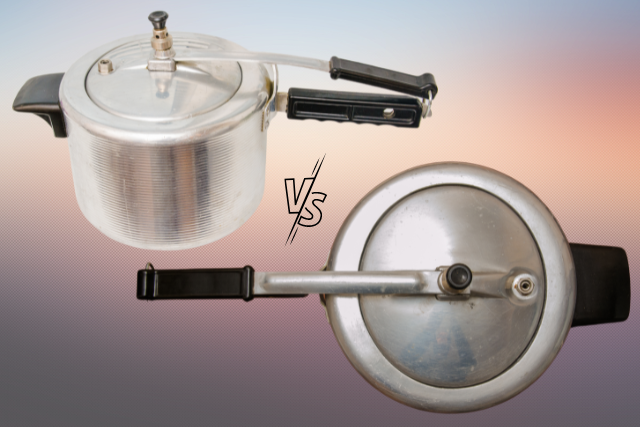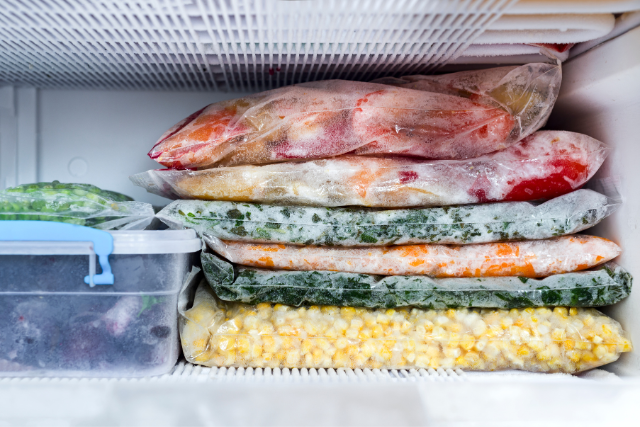Do’s and Don’Ts While Using a Pressure Cooker

Are you ready to master the art of pressure cooking?
In this article, we’ll guide you through the do’s and don’ts of using a pressure cooker. Whether you’re a beginner or a seasoned pro, these tips ensure a safe and successful cooking experience.
We’ve covered you, from proper venting techniques to time and temperature guidelines.
So, let’s dive in and make the most of your pressure cooker!
Safety Precautions
You should always prioritize your safety when using a pressure cooker. Before using it, read and understand the instruction manual carefully. Inspect the cooker for any damages or defects, such as a loose handle or a faulty pressure release valve.
Always use the pressure cooker on a stable and level surface to prevent accidents. When opening the cooker, don’t force it open. Instead, wait for the pressure inside to completely release before removing the lid.
Never overfill the pressure cooker when cooking, as this can lead to dangerous situations. Also, avoid using the cooker for deep frying or canning, as it isn’t designed for these purposes.
Proper Venting Techniques
To ensure proper venting, it’s important to understand the pressure cooker’s venting mechanisms and follow the manufacturer’s instructions carefully. The venting mechanism is designed to release excess steam and pressure during cooking, preventing any potential hazards.
Before using the pressure cooker, ensure the venting valve is clean and free from blockages. Once you have added the ingredients and sealed the lid, place the pressure cooker on the heat source and set it to the desired cooking time.
The venting valve will start releasing steam as the pressure builds up inside. This is a sign that the pressure cooker is working correctly.
It’s crucial never to attempt to force open the pressure cooker while it’s still under pressure. Always wait for the pressure to release naturally before opening the lid.
Cooking Time and Temperature Guidelines
For optimal results, always refer to the cooking time and temperature guidelines provided by the manufacturer when using a pressure cooker. These guidelines are designed to ensure that your food is cooked thoroughly and safely.
The cooking times and temperatures will vary depending on the type of food you’re cooking and the size of your pressure cooker. Following these guidelines closely is important to prevent undercooking or overcooking your dishes.
When setting the cooking time and temperature, consider the recommended pressure level. This will help you achieve the desired texture and flavor of your meals.

Cleaning and Maintenance Tips
To ensure the longevity and efficiency of your pressure cooker, regularly clean and maintain its various components.
First, unplug the cooker and let it cool down completely before cleaning.
Then, disassemble the lid, gasket, and pressure release valve. Wash these parts with hot, soapy water, and use a brush to remove any food residue. Be sure to dry them thoroughly before reassembling them.
Use a non-abrasive sponge or cloth to clean the inner pot with warm, soapy water. Stubborn stains can be removed by soaking the pot in vinegar and water.
Lastly, wipe the exterior of the cooker with a damp cloth and avoid using abrasive cleaners.
Common Mistakes to Avoid
Don’t forget to release the pressure before opening the pressure cooker’s lid. This is one of the most common mistakes people make when using a pressure cooker.
Failing to release the pressure can result in a dangerous situation, as the steam inside the cooker can cause the lid to open and potentially cause burns or other injuries.
To avoid this, always remember to turn off the heat and allow the pressure to naturally release before opening the lid.
Additionally, another common mistake to avoid is overfilling the pressure cooker. Overfilling can lead to clogging of the pressure release valve and affect the cooking time and performance of the cooker.
Always follow the manufacturer’s recommended fill lines and guidelines to ensure safe and effective cooking.

Frequently Asked Questions
What Are Some Popular Recipes That Can Be Made in a Pressure Cooker?
You can make a variety of popular recipes in a pressure cooker.
The possibilities are endless, from tender pot roasts to flavorful soups and stews.
Just be sure to follow the safety guidelines.
Can I Use a Pressure Cooker on an Induction Cooktop?
Yes, you can use a pressure cooker on an induction cooktop. It provides efficient and even heating.
How Do I Know if My Pressure Cooker Is Properly Sealed Before Cooking?
To know if your pressure cooker is properly sealed before cooking, there are a few steps you can follow. Check for steam escaping from the sides or the pressure release valve. This can indicate that the cooker is not properly sealed.
Make sure the lid is securely locked in place. If it is loose or does not fit snugly, it may cause steam to escape during cooking. These precautions will help ensure your pressure cooker is properly sealed and ready for use.
Are Any Specific Ingredients That Should Not Be Cooked in a Pressure Cooker?
Make sure to avoid certain ingredients when using a pressure cooker. Some examples include:
- Dairy products
- Thickening agents
- Foods that foam or froth
These ingredients can cause clogging and safety issues.
Can I Open the Pressure Cooker Before It Has Completely Depressurized?
No, you shouldn’t open the pressure cooker before it depresses completely. Doing so can be dangerous and may result in steam burns or other accidents.
Always wait for the pressure to release naturally.
Conclusion
Using a pressure cooker can be a convenient and time-saving way to cook meals, but following the proper safety precautions and techniques is important.
By ensuring proper venting, following cooking time and temperature guidelines, and practicing regular cleaning and maintenance, you can avoid common mistakes and enjoy the benefits of pressure cooking.
So, remember these do’s and don’ts to make the most out of your pressure cooker experience.






